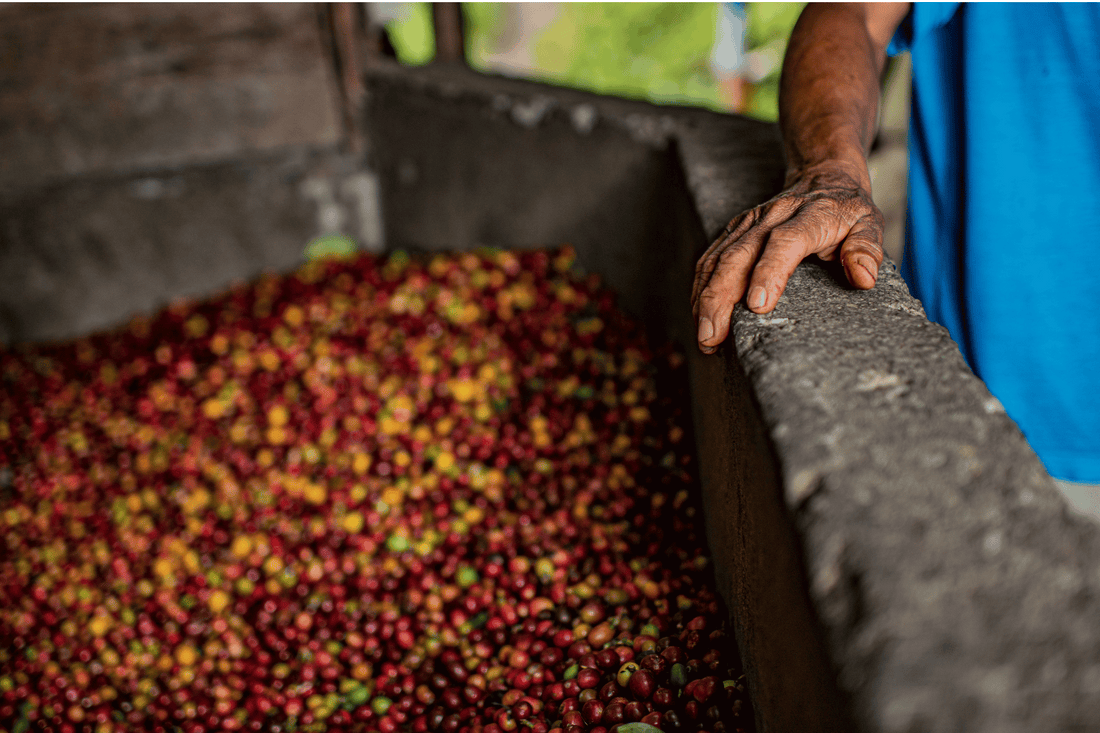The label on every bag of specialty coffee beans includes information about the producer, the location, the variety as well as the processing method. The processing method relates to the treatment of the green beans once they have been picked, and it plays a crucial role in the taste of your brewed cup of coffee.
There are typically three main methods of processing coffee beans – natural, washed, and honeyed, but increasingly, farmers are experimenting with other forms of processing, including fruit fermentation. Below we cover the three main forms of coffee bean processing that yield quite different results and ultimately flavour.
Natural Process
A natural processed coffee, also referred to as dry processed, is a traditional yet common way to process coffee today. Originating in Ethiopia, it involves drying out the entire freshly picked coffee cherry with the seed still inside. To do this, coffee producers take all the cherries and place them on drying beds in the sun.
Throughout the course of 3-6 weeks, the coffee will ferment, and producers will rake these cherries and rotate them to prevent spoiling. During this time, the sugars and mucilage (the sticky substance that coats the seed) will latch onto the seeds, which develop flavours. Once the coffee is dry, a machine separates the pulp and the skin from the seed. These coffees tend to be rich, aromatic, bold, complex, fruity, and exotic tasting.
Washed Process
Only the ripest coffee cherries can be used in the washed process. A depulper removes the skin and pulp from the seeds and then the seeds go into tanks full of water. The amount of time the seeds spend in the water tanks can range from 8 hours –72 hours. The final step in the process is drying the seeds in the sun. This process method yields a high level of flavour clarity without a lot of muddiness or cloudiness. These coffees are consistently delicious, crisp, clear, and insightful.
Honey Process
This method was pioneered in Brazil, and it involves the use of both the natural and washed processing methods. During honey processing, a depulper removes the seed from the cherry before it dries out. However, it does not go into a washing tank to get rid of the mucilage. That mucilage, which is what the honey refers to, stays on the seed as it dries in the sun afterwards. The amount of mucilage left behind determines the sweetness. These coffees are complex, sweet, heavy-bodied, and with a mellow acidity.
Coffee Processing Explained

